Surgical Weight Loss Procedures
Surgical approaches to treating obesity are specific to each person, but all treatment options share the common goal of providing a long-term solution to weight management to help patients live healthier lives. Our surgical team regularly performs several weight loss procedures:
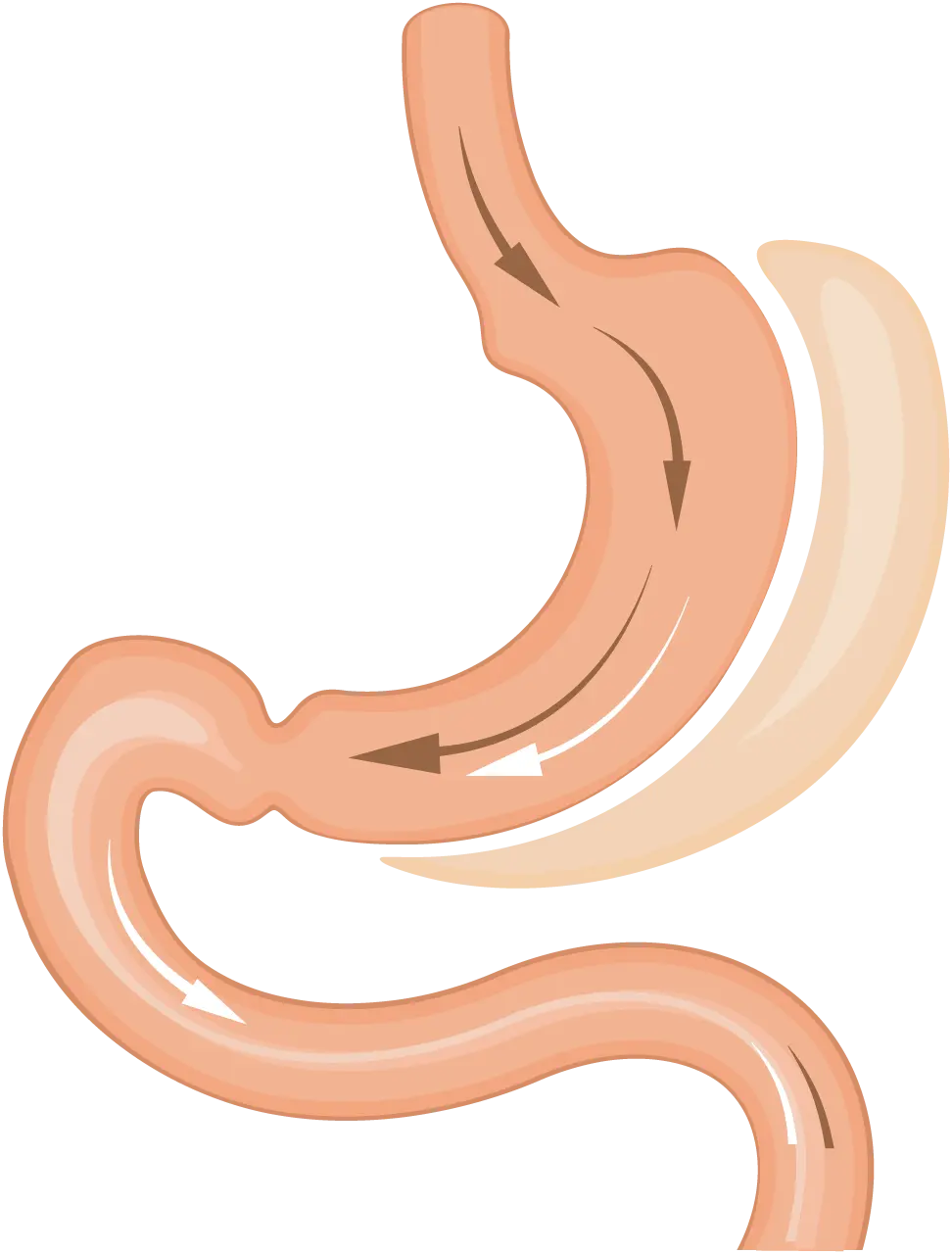
Sleeve gastrectomy, also called "the vertical sleeve" or "the sleeve," involves removing about two-thirds or up to 80% the left side of the stomach, leaving a banana-shaped sleeve or smaller stomach. This restricts the amount of food you can eat at one time, helping you feel full faster. It also produces positive changes in hormones that suppress hunger, reduce appetite and improve satiety (or the feeling of being full).
As with other bariatric surgeries, sleeve gastrectomy can provide more benefits than just weight loss, such as lower blood pressure and cholesterol, improvement or even resolution of Type 2 diabetes, less joint pain, more energy and better sleep. It also can reduce the risk of other weight-related health problems such as cancer, heart disease and stroke.
With sleeve gastrectomy, the smaller stomach and resulting changes in hormones can facilitate rapid and significant weight loss. Although each patient is different, many patients see long-term success with this type of surgery.
Learn more about the long-term benefits of weight loss surgery.
8 Long-Term Benefits of Bariatric SurgeryThe Roux-en-Y gastric bypass procedure reduces the size of the stomach and reroutes food through the intestine. It involves dividing the upper portion of the stomach to create a smaller stomach pouch. This restricts the amount of food that can be consumed at one time. The surgeon then connects the pouch to a section of the lower intestine, so that the food will bypass the area where calories and nutrients are absorbed.
The Roux-en-Y gastric bypass surgery also causes changes in hormones that can help to promote a feeling of fullness.
Whenever possible, our surgeons use a minimally invasive laparoscopic approach, which often requires a shorter hospital stay. Minimally invasive surgery may lead to less pain and scarring and a quicker recovery.
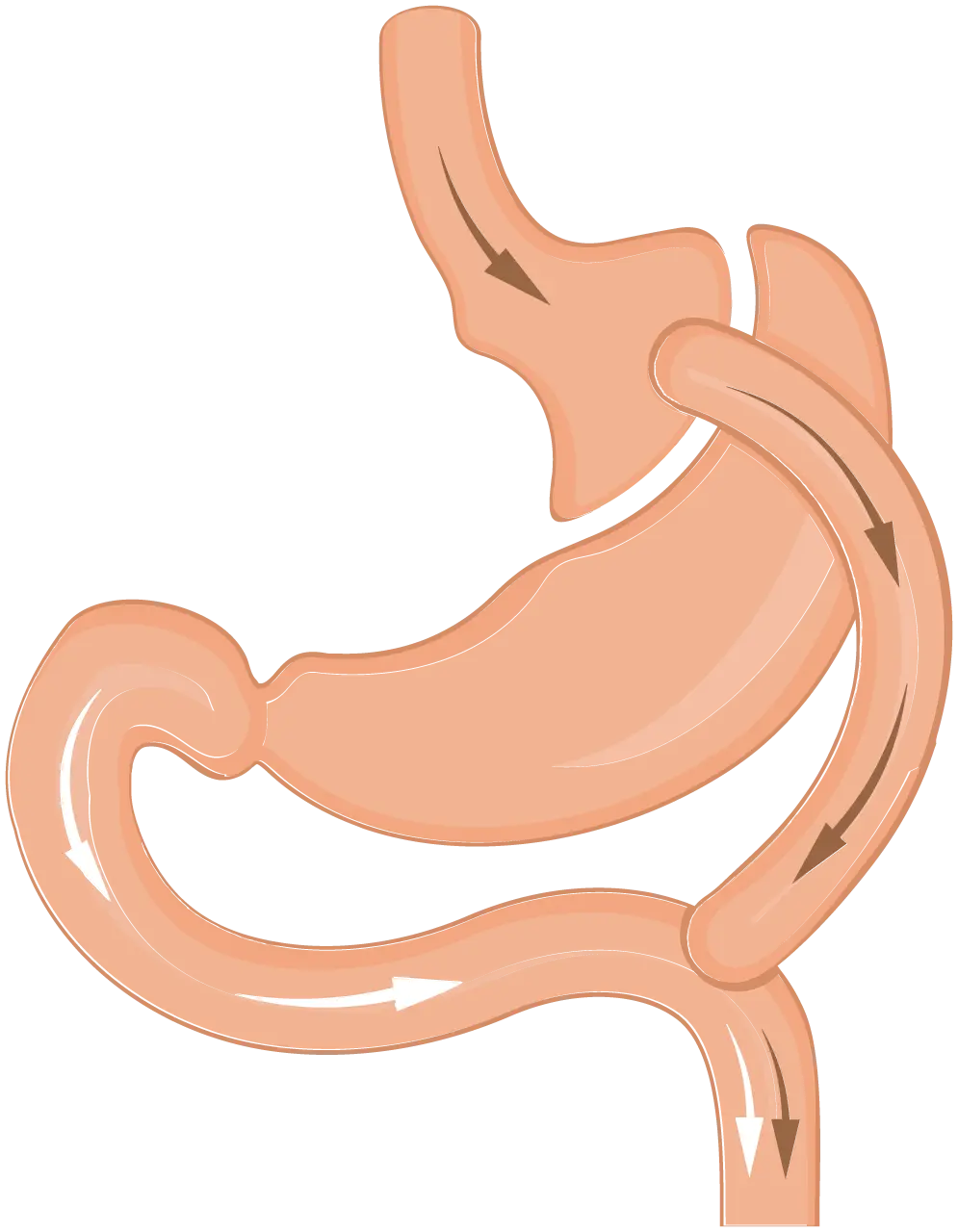
Gastric bypass involves several steps. First, the upper portion of the stomach is stapled to create a small pouch. As with sleeve gastrectomy, this restricts the amount of food you can eat at one time and produces positive changes in gut hormones that reduce appetite and enhance satiety (the feeling of being full).
The next step is dividing the first part of the small intestine into a Y shape. One arm of the Y attaches to the smaller stomach pouch so that food will bypass a portion of the small intestine where calories are absorbed. The other arm is attached to the lower, unused portion of the stomach so that digestive juices rejoin the food in a lower section of the small intestine.
Gastric bypass surgery, combined with the patient's commitment to a healthy lifestyle, nutrition and exercise, can produce substantial and long-term weight loss.
And like other bariatric surgeries, gastric bypass can provide more benefits than just weight loss, such as lower blood pressure and cholesterol, improvement or even resolution of Type 2 diabetes, less joint pain, more energy and better sleep. It also can reduce the risk of other weight-related health problems such as cancer, heart disease and stroke.
Learn more about the long-term benefits of weight loss surgery.
8 Long-Term Benefits of Bariatric Surgery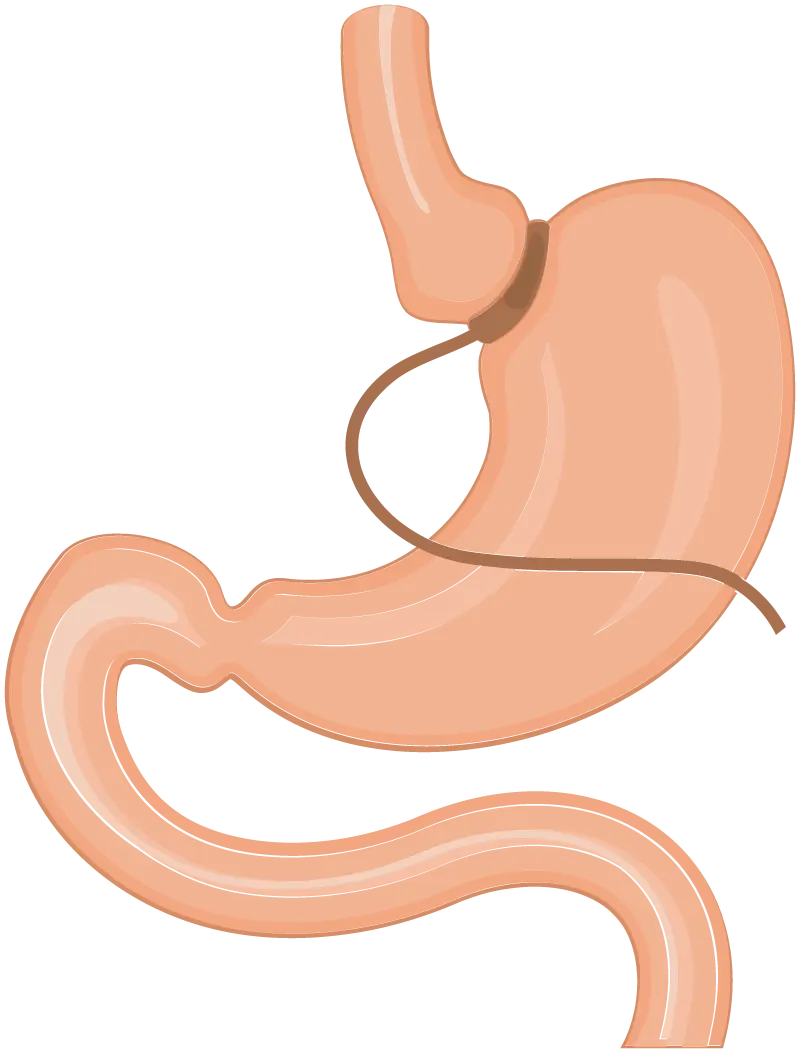
In an adjustable gastric banding procedure, also called "lap band," an inflatable silicone band is placed around the uppermost part of the stomach, dividing it into two parts: a small upper pouch and a lower stomach. With a smaller stomach pouch, patients begin to feel fuller sooner because their hunger is satisfied by a smaller amount of food. As a result, they are able to decrease the total amount of calories consumed.
The band can be adjusted - tightened or loosened - as needed during follow-up visits. This procedure is reversible and less invasive than most weight-loss surgeries.
Although individual results may vary, most patients who undergo this procedure can lose up to half of their excess weight. And as with other weight-loss procedures, adjustable gastric banding can result in additional benefits, such as lower cholesterol and blood pressure, less joint pain, more energy and better sleep. It can also reduce the risk of other weight-related health problems, such as Type 2 diabetes, heart disease, stroke and certain types of cancer.
Learn more about the long-term benefits of weight loss surgery.
8 Long-Term Benefits of Bariatric Surgery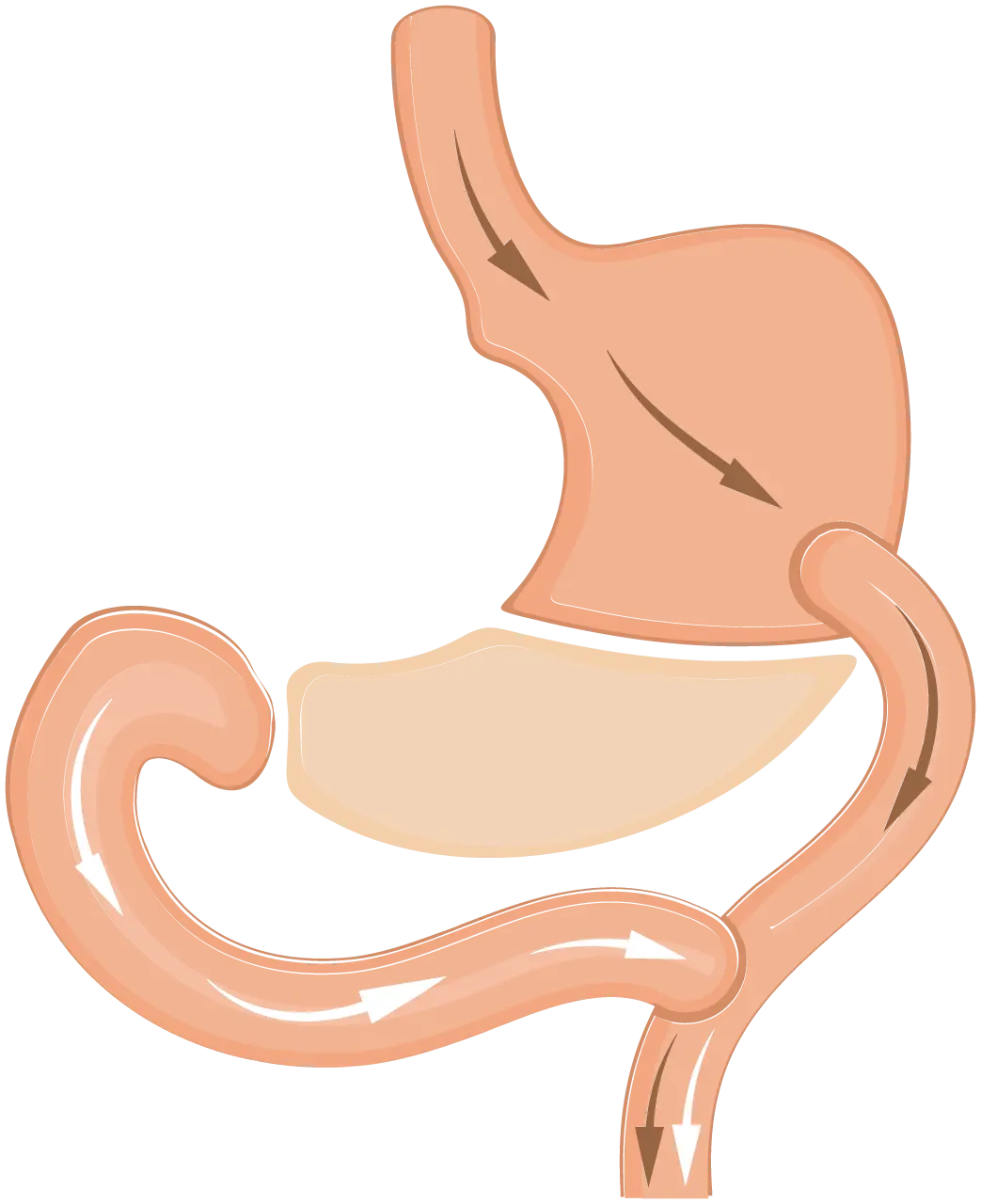
Biliopancreatic diversion with duodenal switch involves two primary steps. First, a sleeve gastrectomy is performed, removing the majority of the stomach, creating a small banana-shaped sleeve or smaller stomach. This restricts the amount of food you can eat in one setting and helps you feel fuller faster. Next, the upper portion of the small intestine, called the duodenum, is bypassed, and reattached near the lower end of the small intestine, decreasing the body's ability to absorb calories.
This surgery produces favorable changes in gut hormones to reduce appetite and improve satiety (the feeling of being full). It also can be effective at improving or resolving Type 2 diabetes, lowering blood pressure and cholesterol, reducing joint pain, and improving other obesity-related health conditions. It can help reduce the risk of other health problems, such as heart disease, stroke, depression and certain types of cancer.
Learn more about the long-term benefits of weight loss surgery.
8 Long-Term Benefits of Bariatric Surgery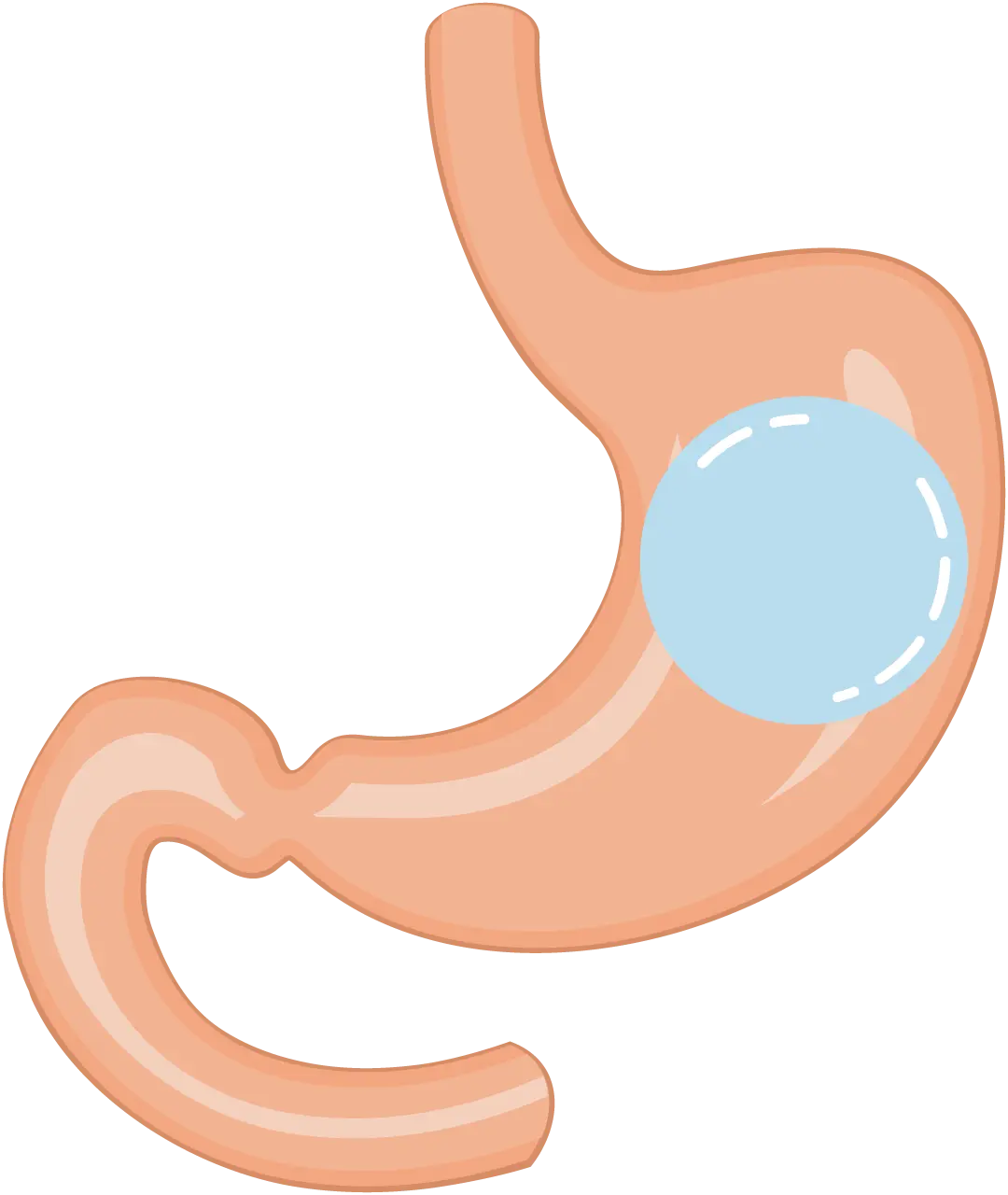
An intragastric balloon is a non-surgical option for qualified patients. This procedure is typically used to help individuals starting a diet-and-exercise regimen who want assistance controlling their hunger and limiting their food intake. It can also help patients lose weight before surgery to reduce their risk of complications.
The intragastric balloon is a soft, expandable silicone balloon inserted during an outpatient visit. After a patient is mildly sedated, a deflated balloon is inserted through the mouth and down the esophagus into the stomach. Once in place, the balloon is slowly inflated with saline through a tube. This creates a sense of fullness and restricts the amount of food you can eat at one time.
The balloon is a short-term solution and can be left in place for six months. Patients who combine a medically supervised diet and exercise program with the balloon tend to experience and maintain more weight loss.
Learn more about the long-term benefits of weight loss surgery.
8 Long-Term Benefits of Bariatric SurgeryThe single anastomosis duodenal switch, also called a "loop duodenal switch," starts with a sleeve gastrectomy, removing a large portion of the stomach to create a smaller, banana-shaped pouch that holds less food. This restricts how much you can eat at one time and helps you feel full faster.
A lower section of the small intestines is then looped and reconnected to the stomach through one new connection. This allows food to bypass much of the small intestine, decreasing calorie absorption. Unlike the biliopancreatic diversion with duodenal switch, this surgery, as its name suggests, requires only one new connection to the small intestine.
As with other bariatric surgeries, SADI-S can aid in the improvement or reversal of Type 2 diabetes, hypertension, high cholesterol, joint pain, sleep apnea and other obesity-related health conditions. It can help reduce the risk of heart disease, stroke, depression, and certain types of cancer.
Learn more about the long-term benefits of weight loss surgery.
8 Long-Term Benefits of Bariatric SurgeryPatient results may vary. Consult your physician about the benefits and risks of any surgical procedure or treatment.
"Weight loss surgery has completely transformed my outlook on life. Not only have I achieved significant weight loss, but my confidence is at an all-time high. I feel better now than I ever did as a kid—more energized, healthier, and able to enjoy life in ways I never could before."
Curious if weight loss surgery is right for you?
Learn more about the procedures by downloading our guide to bariatric surgery or attend a seminar to learn more about the procedures and meet the team.